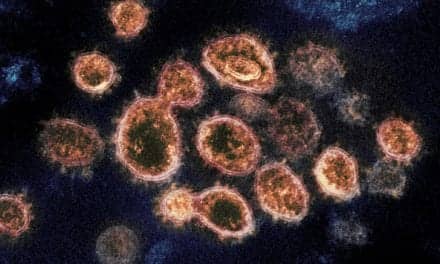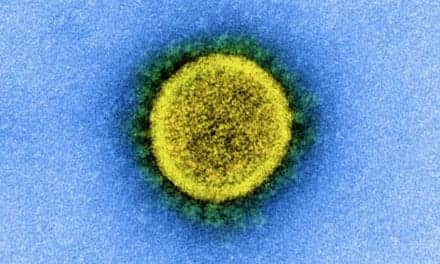Sebum samples collected from the surface of the skin may be a viable method of detecting covid-19 and other diseases, according to British researchers.1 Chemists from Surrey teamed up with Frimley NHS Trust and the Universities of Manchester and Leicester to collect sebum samples from 67 hospitalized patients—30 of whom had tested positive for covid-19 and 37 who had tested negative. The samples were collected by gently swabbing a skin area rich in sebum—an oily, waxy substance produced by the body’s sebaceous glands—such as the face, neck, or back.
The researchers analyzed the samples by using liquid chromatography mass spectrometry and a statistical modelling technique called Partial Least Squares—Discriminant Analysis to differentiate between the covid-19 positive and negative samples.
The Surrey team found that patients with a positive covid-19 test had lower lipid levels—or dyslipidemia—than their counterparts with a negative test. The accuracy of the study’s results increased further when medication and additional health conditions were controlled.
“Covid-19 damages many areas of metabolism,” says Matt Spick, PhD, from the University of Surrey. “In this work, we show that the skin lipidome can be added to the list, which could have implications for the skin’s barrier function, as well as being a detectable symptom of the disease itself.”
“Unfortunately, the specter of future pandemics is firmly on the top of the agenda for the scientific community,” says Melanie Bailey, PhD, from the University of Surrey. “Our study suggests that we may be able to use noninvasive means to test for diseases such as covid-19 in the future—a development which I am sure will be welcomed by all.”
“Investigating new methods of diagnosis and surveillance in a new disease such as COVID-19 that has had such a devastating effect on the world is vital,” says George Evetts, MD, consultant in anaesthesia and intensive care medicine at Frimley Park Hospital. “Sebum sampling is a simple, noninvasive method that shows promise for both diagnostics and monitoring of the disease in both a healthcare and a non-healthcare setting.”
Reference
- Spick M, Longman K, Frampas C, et al. Changes to the sebum lipidome upon COVID-19 infection observed via rapid sampling from the skin. EClinicalMedicine. Epub. March 6, 2021. doi: 10.1016/j.eclinm.2021.100786.
Featured image: This scanning electron microscope image shows SARS-CoV-2 (yellow)—also known as 2019-nCoV, the virus that causes COVID-19—isolated from a patient in the U.S., emerging from the surface of cells (pink) cultured in the lab. Credit: National Institute of Allergy and Infectious Diseases-Rocky Mountain Laboratories, NIH





